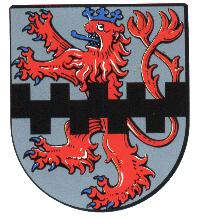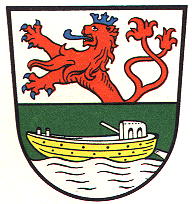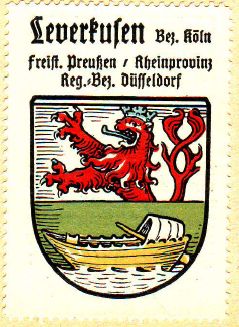Leverkusen: Difference between revisions
Knorrepoes (talk | contribs) m (Text replacement - "{| class="wikitable"↵|+Official blazon↵|-↵|'''German'''↵| ↵|-↵|'''English''' ↵| {{blazon wanted}}↵|}" to "{| class="wikitable" |+Official blazon |- |'''German''' | blazon wanted |- |'''English''' | blazon wanted |}") |
Knorrepoes (talk | contribs) m (Text replacement - "{{de1}}" to "{{de}}") |
||
| Line 34: | Line 34: | ||
{{ | {{de}} | ||
{{media1}} | {{media1}} | ||
Revision as of 10:20, 25 July 2023
LEVERKUSEN
State : Nordrhein-Westfalen
Urban District (Kreisfreie Stadt) : Leverkusen
Additions : 1930 Wiesdorf (1920 Bürrig), Schlebusch, Steinbüchel, Rheindorf; 1975 Opladen (1930 Lützenkirchen (partly)), Bergisch Neukirchen, Hitdorf
| German | blazon wanted |
| English | blazon wanted |
Origin/meaning
Leverkusen was founded in 1920 after the merger of Wiesdorf with 3 surrounding municipalities. The new city was named after Karl Leverkus, who founded a paint factory in Wiesdorf. The new city adopted the arms of Wiesdorf (see below), as the other villages dd not use arms.
After the merger in 1975 the city adopted new arms, showing the lion of Berg, as it was part of the old arms of all the municipalities, except Opladen. Opladen used the oldest arms of the counts of Berg, the black bar, and the new arms thus show a combination of the new and the old arms of Berg.
| The arms by Hupp in the Kaffee Hag albums +/- 1925 |
Municipal stationery, 1960s |
Literature: Stadler, 1964-1971, 8 volumes.
This page is part of the German heraldry portal Deutsche Wappensammlung |
Heraldry of the World |
|
German heraldry:
|
Selected collector's items from Germany:
|





